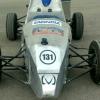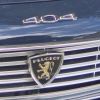I will take another try at analysing the short skirt length; in the case that Grunt started, comparing the GM LS9 to the KTM Super Duke.
The BMEP info that I supplied above provides one comparison that I will carry to the next step as BMEP is a reather abstract measure that most on this forum has no background on or for that matter any comparative data.
Sarba asks a couple of good questions. Unfortunately I have never seen any real force measurement data on a running engine. Hence people using things like BMEP in order to get a feel for relativer differences between engines. I have done a fair bit of dyno work and cn assure you that to instrument an engine to get real live data is very heavy on technology and money. The big companies can afford it but don't appear to share anything. I also seriously doubt that their are any publicly available computer programmes but in reality if you and I used them the results would be meaningless to us so I have never looked.
I have written graphic programmes that show the effect of rod/stroke ratios and this is reasonably profound. The real problem is that without a force-time measure we don't know how far down the bore that the max force exists. I have good data on flame front propogation at i atmosphere pressure but have never tried to use it as the propogation at many atmos pressure and high temperature will be quite different and the results useless to anybody.
Modern lubricants is part of how skirt lengths have shortened, it is many years since I have played with castor oil additives though I do know first hand how some metallic bases additives were once useful.
As Lee says the ring stack height has shrunk tremendously with time for a variety of quite good reasons including ring design.
Let me give another comparison of the Duke and LS9. Lets look at one cylinder in isolation. Max force has to occur pretty close to the RPM for max torque so I will look at that point.
The Duke makes about 30% less torque per cylinder than the LS9, 70.5 NM to 102.4
The duke makes it max torque at 1.97 times the RPM of the LS9, 7500 vs 3800. This effectively means that each Duke power pulse needs to only make 15% of the torque that a LS9 does.
We start to see that each torque (force) making pulse of the LS( is about six times stronger than the Duke.
I suggest that this ays about all that needs to be said as to how they get away with such small skirts, ( that with Lee's commen t on relative engine life). Let,s just say that both are fit for purpose.
Regards


















